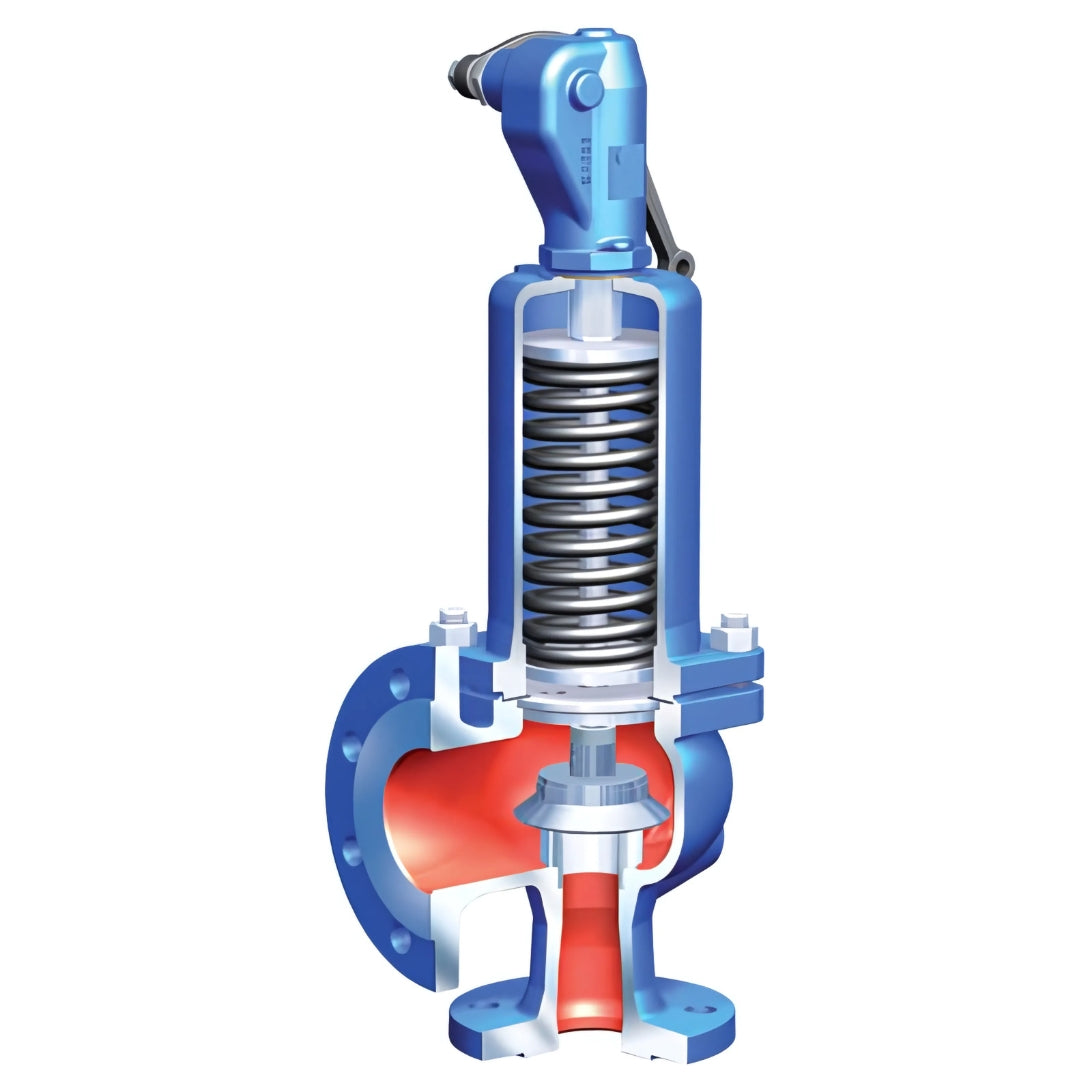Steam Valves
ARI SAFE Safety Valve (Angle Pattern, Flanged PN40, Nodular Iron Body)
ARI SAFE Safety Valve (Angle Pattern, Flanged PN40, Nodular Iron Body)
Couldn't load pickup availability
The ARI SAFE Safety Valve with angle pattern construction, PN40 flanged connections, and a nodular cast iron body is a reliable and cost-effective solution for pressure relief in steam, air, gas, and fluid systems. Designed to open automatically when system pressure exceeds a set limit, this valve protects vital equipment from damage caused by overpressure — ensuring safe and efficient operation.
Built from nodular cast iron (ductile iron), the body offers enhanced toughness and flexibility compared to grey cast iron, while maintaining excellent performance under pressure and temperature cycling. Its PN40 flange rating makes it suitable for medium to high-pressure pipelines, and the angle pattern layout provides a compact, space-efficient solution for vertical or tight installations. The ARI SAFE valve is ideal for use in heating systems, boiler protection, industrial processing, and general steam applications.
With its dependable lift performance, tight shut-off, and robust construction, the ARI Armaturen SAFE Safety Valve offers long-term safety, reliability, and minimal maintenance.
Key Features
Nodular Cast Iron Body
Offers strength and ductility with good resistance to thermal and mechanical stress.
Angle Pattern Configuration
Compact layout ensures efficient pressure release and easy vertical installation.
PN40 Flanged Connections
Supports pressures up to 40 bar for use in medium to high-pressure pipelines.
Accurate Overpressure Relief
Automatically discharges excess pressure at a defined setpoint to protect system integrity.
Low Maintenance Design
Engineered for long service life with minimal operational intervention.
Ideal for Steam and Utility Systems
Commonly used in boiler plants, pressure vessels, and industrial process lines.
Share

FAQ's
What is the difference between a valve and an actuator?
What types of actuators are available?
The main types of actuators are:
Pneumatic actuators – use compressed air for fast, reliable operation.
Electric actuators – use electrical power for precise control.
Hydraulic actuators – use fluid pressure for high-torque applications.
Each type offers unique advantages depending on the environment, media, and system control needs.
How do I choose the right actuator for my valve?
To select the correct actuator, consider:
Valve type and torque requirement
Power source available (air, electric, or hydraulic)
Operating environment (temperature, humidity, hazardous area)
Control signal type (on/off or modulating)
Matching actuator torque and compatibility with the valve’s ISO mounting ensures reliable performance.
What are the main types of valves used in automation?
The most common valves in automated systems include:
Ball valves – for tight shutoff and quick operation.
Butterfly valves – for larger flow control with compact design.
Globe valves – for precise throttling and flow regulation.
Check valves – to prevent backflow.
Gate valves – for full bore flow isolation.
What’s the difference between a double-acting and spring-return actuator?
Double-acting actuators use air (or power) to both open and close the valve.
Spring-return actuators use air to open (or close) the valve, and a built-in spring to automatically return it to a safe position when power or air is lost — ideal for fail-safe operation.
How often should valves and actuators be serviced?
Regular maintenance intervals depend on operating conditions, but a good rule of thumb is to inspect every 6–12 months.
This includes checking for leaks, lubrication, seal wear, and actuator responsiveness to prevent unexpected downtime.

